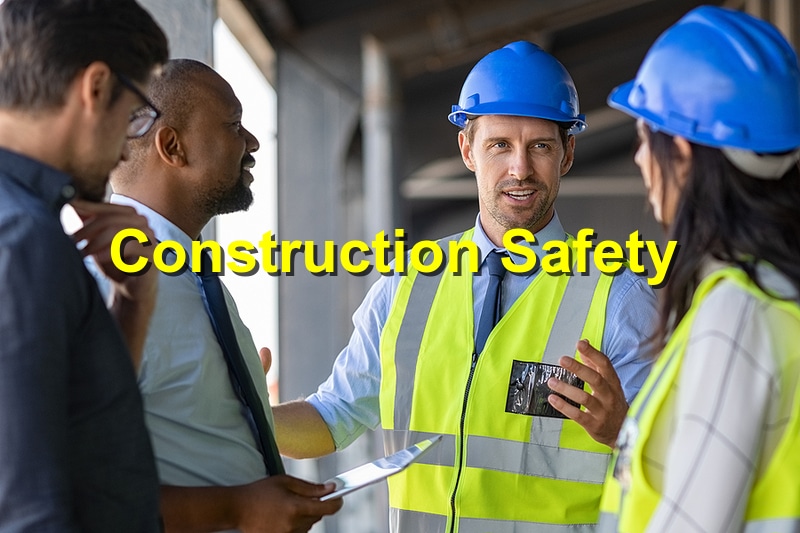Worker safety on a construction site is crucial not only for legal compliance but also for maintaining productivity and ensuring project success. With the inherent risks of construction work, including heavy machinery, elevated workspaces, and hazardous materials, contractors must take proactive steps to create a safe work environment.
This guide explores essential safety practices, regulatory requirements, and practical strategies that contractors can implement to protect workers and promote a culture of safety.
1. Conduct Thorough Safety Training
1.1 Provide Initial and Ongoing Training
Training is the first line of defense against jobsite accidents:
- Onboarding sessions should cover safety protocols, emergency procedures, and equipment usage.
- Ongoing training programs keep safety practices up-to-date, especially with new tools or regulations.
- Interactive training methods, such as simulations and hands-on practice, improve knowledge retention.
1.2 Emphasize Specific Hazards
Different jobsites have unique risks:
- Identify common hazards specific to the type of work, like fall risks, electrical dangers, or exposure to chemicals.
- Tailor training programs to address these specific risks.
- Provide specialized training for high-risk tasks, such as working at heights or operating heavy machinery.
Regular training refreshers help keep safety top of mind for all workers.
2. Provide Personal Protective Equipment (PPE)
2.1 Supply Appropriate PPE
PPE is critical for minimizing injuries:
- Hard hats, safety glasses, gloves, steel-toed boots, and high-visibility clothing are basic requirements.
- Specialized PPE, such as respirators, harnesses, and hearing protection, should be available for specific tasks.
- Ensure PPE meets regulatory standards, such as OSHA (Occupational Safety and Health Administration) requirements.
2.2 Enforce Proper PPE Use
Having PPE available is not enough—enforcement is key:
- Set policies that require PPE use at all times on active construction sites.
- Monitor workers regularly to ensure compliance.
- Establish consequences for not wearing PPE, while promoting safety culture positively.
Visible leadership support for PPE policies encourages worker buy-in.
3. Maintain Safe Equipment and Tools
3.1 Conduct Regular Equipment Inspections
Faulty equipment can lead to serious accidents:
- Inspect tools and machinery before each use.
- Implement maintenance schedules for heavy equipment, including excavators, cranes, and power tools.
- Document inspection results and address issues immediately.
3.2 Provide Proper Tool Training
Even well-maintained tools can be dangerous if used incorrectly:
- Train workers on the correct operation of tools and machinery.
- Highlight specific safety features, like emergency stops and safety guards.
- Discourage shortcuts or unsafe practices, even under tight deadlines.
Safe equipment handling reduces risk and enhances productivity.
4. Implement Site Safety Protocols
4.1 Establish Clear Safety Procedures
Written safety protocols guide daily operations:
- Develop standard operating procedures (SOPs) for high-risk activities, such as lifting heavy loads or working with electricity.
- Post safety guidelines around the jobsite, especially in high-traffic areas.
- Encourage reporting of hazards without fear of retaliation.
4.2 Control Site Access
Restricting access to authorized personnel enhances safety:
- Set up barriers around dangerous zones, like excavation sites or elevated work platforms.
- Use signage to indicate restricted areas, required PPE, and potential hazards.
- Maintain visitor logs and provide safety briefings to anyone entering the site.
Controlled access helps prevent accidents and protect workers and visitors.
5. Promote a Culture of Safety
5.1 Lead by Example
Safety culture starts with leadership:
- Contractors and supervisors should demonstrate safe practices consistently.
- Participate in safety drills, wear PPE, and follow site protocols.
- Acknowledge and reward safe behavior among workers.
5.2 Encourage Open Communication
Creating an environment where workers feel safe to speak up is important:
- Hold regular safety meetings to discuss challenges and solutions.
- Provide channels for anonymous safety reporting, such as suggestion boxes or hotlines.
- Act promptly on safety concerns, showing workers their input is valued.
Effective communication enhances awareness and reduces risks.
6. Prepare for Emergencies
6.1 Develop an Emergency Response Plan
Emergency preparedness can save lives:
- Outline clear steps for evacuations, medical emergencies, and fire incidents.
- Assign specific roles to team members, such as first aid responders or evacuation leaders.
- Conduct emergency drills regularly to reinforce procedures.
6.2 Keep First Aid Kits and Emergency Equipment Accessible
Quick access to emergency supplies is critical:
- Place first aid kits in multiple locations on the jobsite.
- Ensure fire extinguishers, spill kits, and rescue equipment are visible and maintained.
- Train workers in basic first aid and CPR.
Being prepared reduces the impact of accidents and enhances worker confidence.
7. Stay Compliant with Regulations
7.1 Understand Local and National Safety Standards
Compliance is not just legal—it’s essential for safety:
- Familiarize yourself with OSHA regulations and local building codes.
- Implement required safety measures, including fall protection, scaffolding safety, and hazard communication.
- Schedule regular audits to ensure compliance.
7.2 Document Safety Practices
Accurate documentation supports compliance and improves safety protocols:
- Keep records of training sessions, safety inspections, and incident reports.
- Use digital tools to track safety data and generate compliance reports.
- Review documentation regularly to identify trends and improve practices.
Proper documentation also helps in case of inspections or legal evaluations.
Conclusion
Ensuring worker safety on a construction jobsite requires comprehensive planning, consistent training, and a commitment to safety culture. By providing appropriate PPE, maintaining equipment, establishing clear protocols, and promoting open communication, contractors can create safer worksites and reduce accident risks.
A safe work environment not only protects workers but also enhances productivity, builds team morale, and ensures compliance with regulations. For construction leaders, prioritizing safety is an investment in the well-being of their teams and the success of their projects.
References: buildreview, eSub




